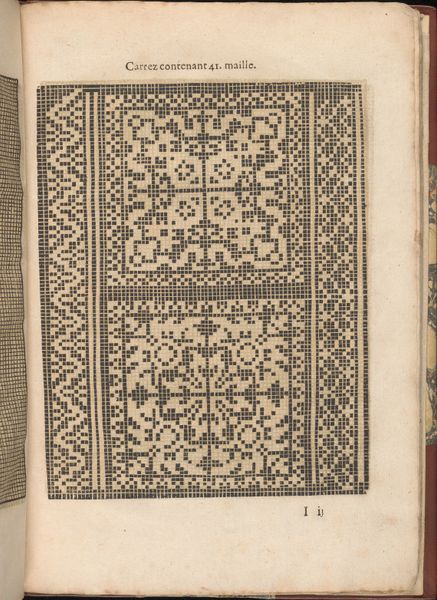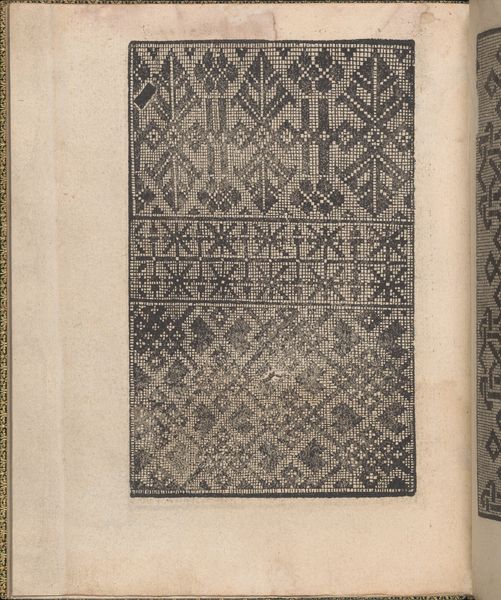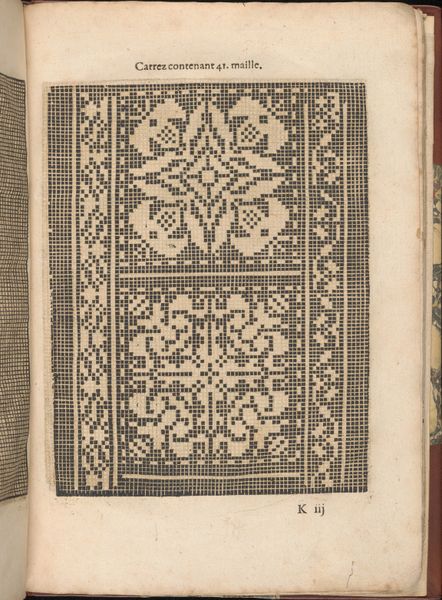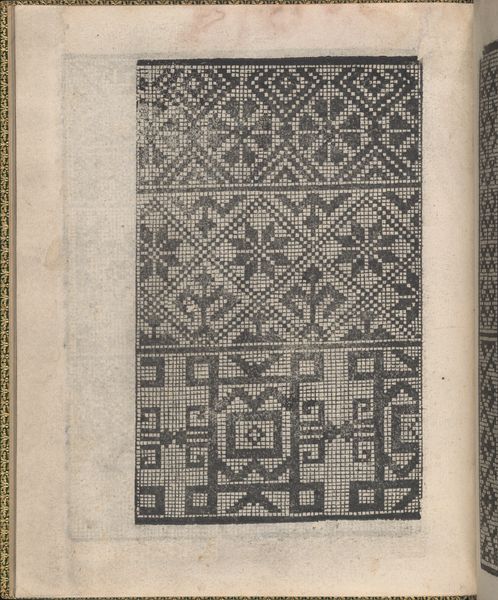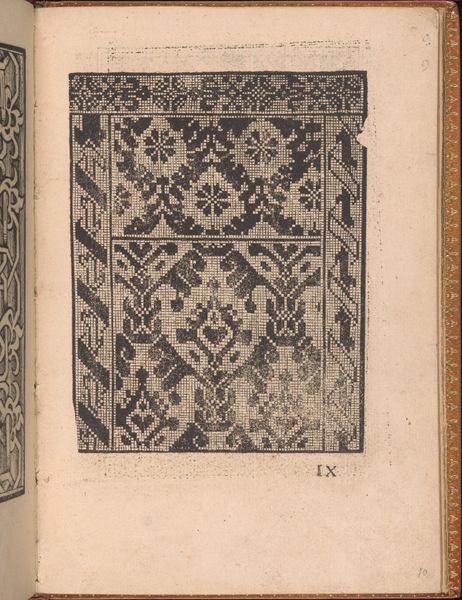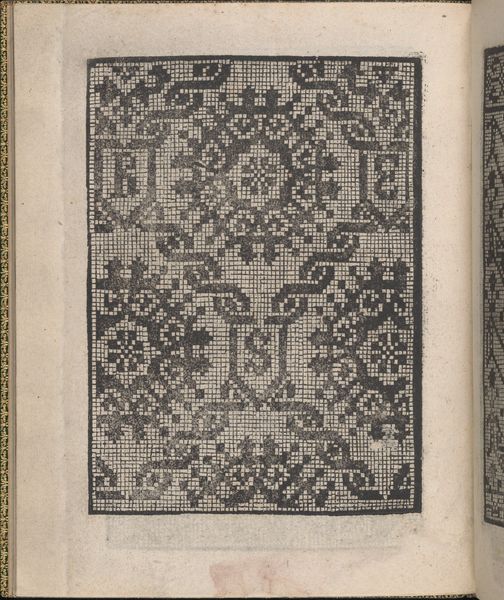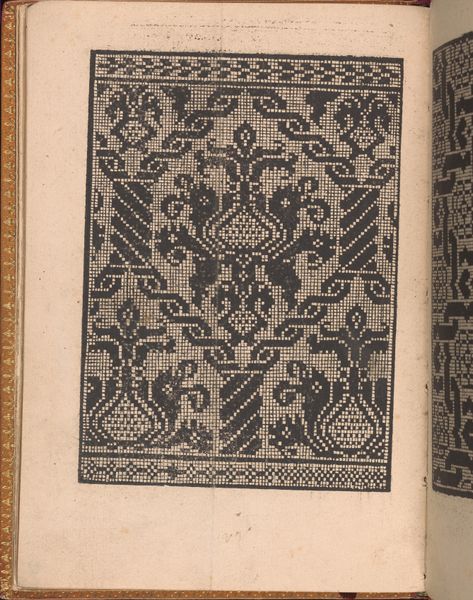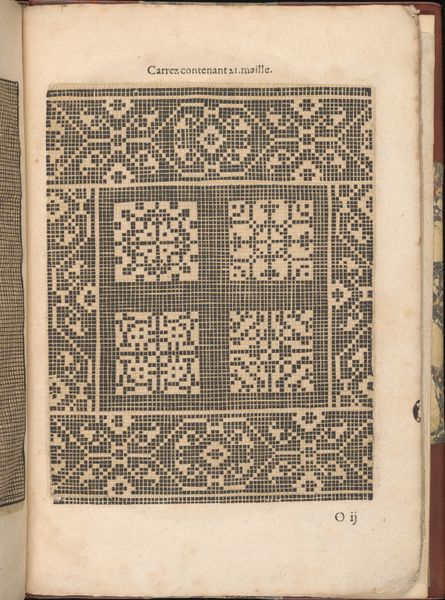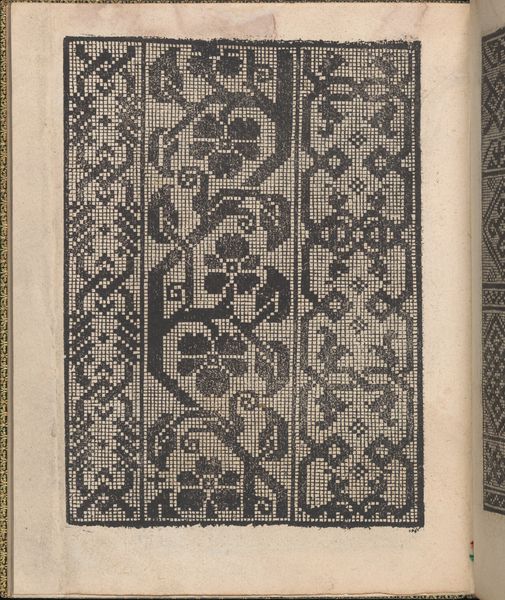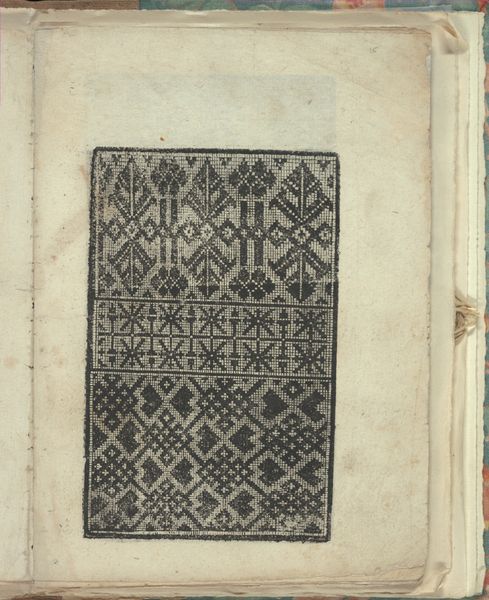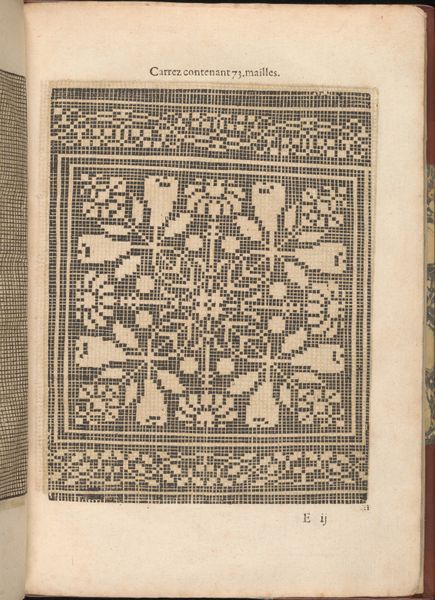
Ornamento delle belle & virtuose donne, page 8 (recto) 1554
0:00
0:00
drawing, ornament, print, engraving
#
drawing
#
ornament
# print
#
11_renaissance
#
geometric
#
engraving
Dimensions: Overall: 7 1/2 x 5 7/8 in. (19 x 15 cm)
Copyright: Public Domain
Editor: This is page eight from Matteo Pagano's "Ornamento delle belle & virtuose donne," created in 1554. It’s a detailed engraving meant as a pattern for lace or embroidery. The geometric designs are striking. What historical and social narratives do you think are embedded within this artwork? Curator: Well, at its core, this isn’t just an ornament; it’s a statement about women’s roles and expectations during the Renaissance. The title itself, "Ornament of Beautiful and Virtuous Women," is incredibly telling, isn’t it? These patterns were meant to be copied, executed with skill, and worn to signify a woman's status, her ability to manage a household, and her adherence to societal ideals. Editor: So, the act of creating and wearing these patterns becomes almost like a performance? Curator: Exactly. The pattern book becomes a tool of cultural production. Think about it: geometric shapes, heraldic animals, these all convey particular messages. Who was allowed access to these symbols? Whose stories were deemed worthy of being memorialized in pattern? Furthermore, by prescribing ideals of beauty and virtue, how did it contribute to larger conversations about power, identity, and the marginalization of particular social groups? Editor: I see what you mean. The act of ornamenting then, in a way, becomes more than just aesthetic, and turns into a political declaration? Curator: Precisely. By unpacking the various nuances present within the artwork, one can interpret a story about cultural construction during the Italian Renaissance. What have you learned about the significance of artmaking within certain contexts, especially by underrepresented social groups, during this exploration? Editor: I guess that art production for underrepresented social groups has always had much deeper societal roots than simply creating appealing artworks. Curator: Exactly! Art frequently communicates societal trends more explicitly. It's amazing that something seemingly so simple can contain layers of meaning, power, and resistance, don't you think?
Comments
No comments
Be the first to comment and join the conversation on the ultimate creative platform.
